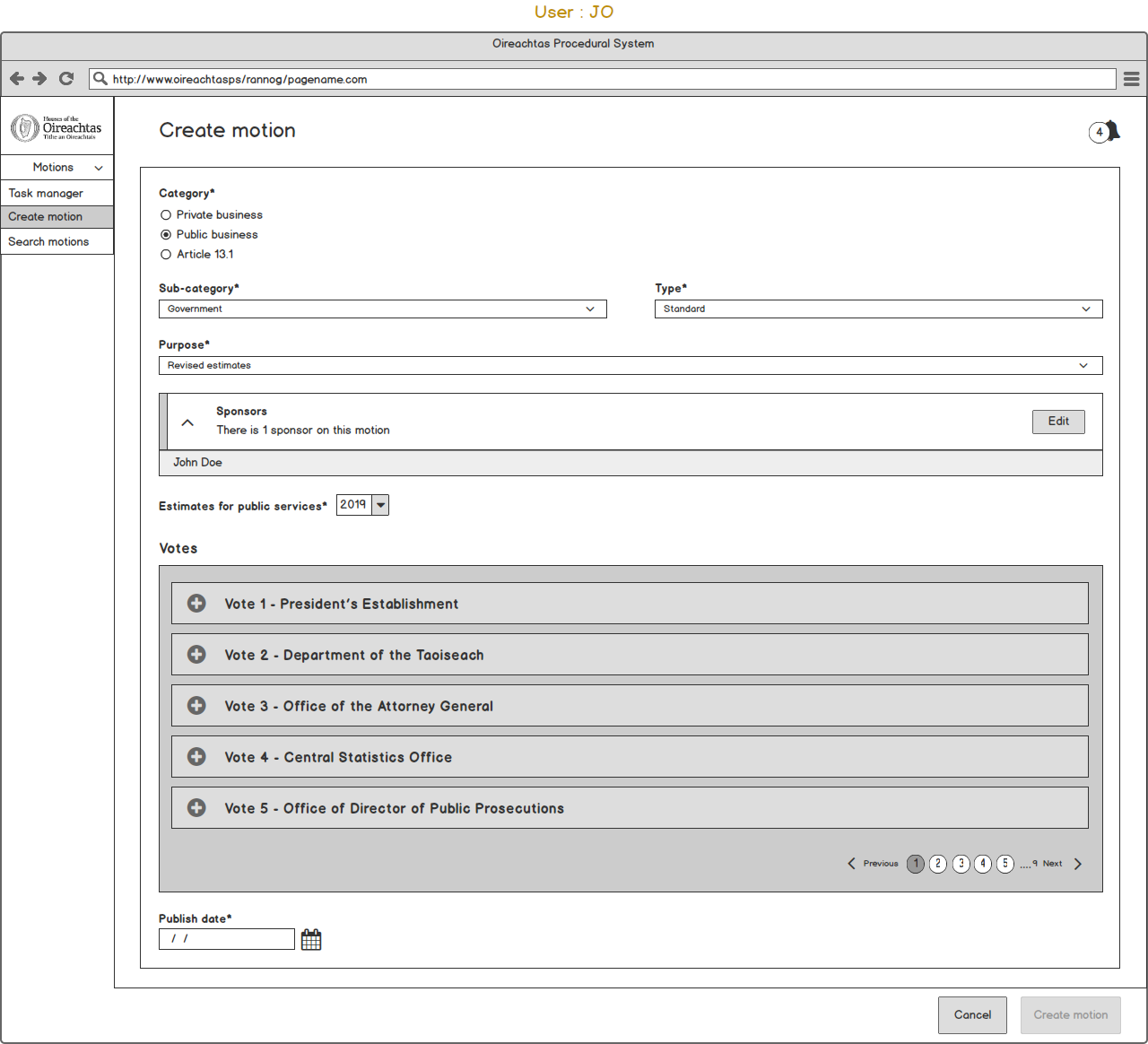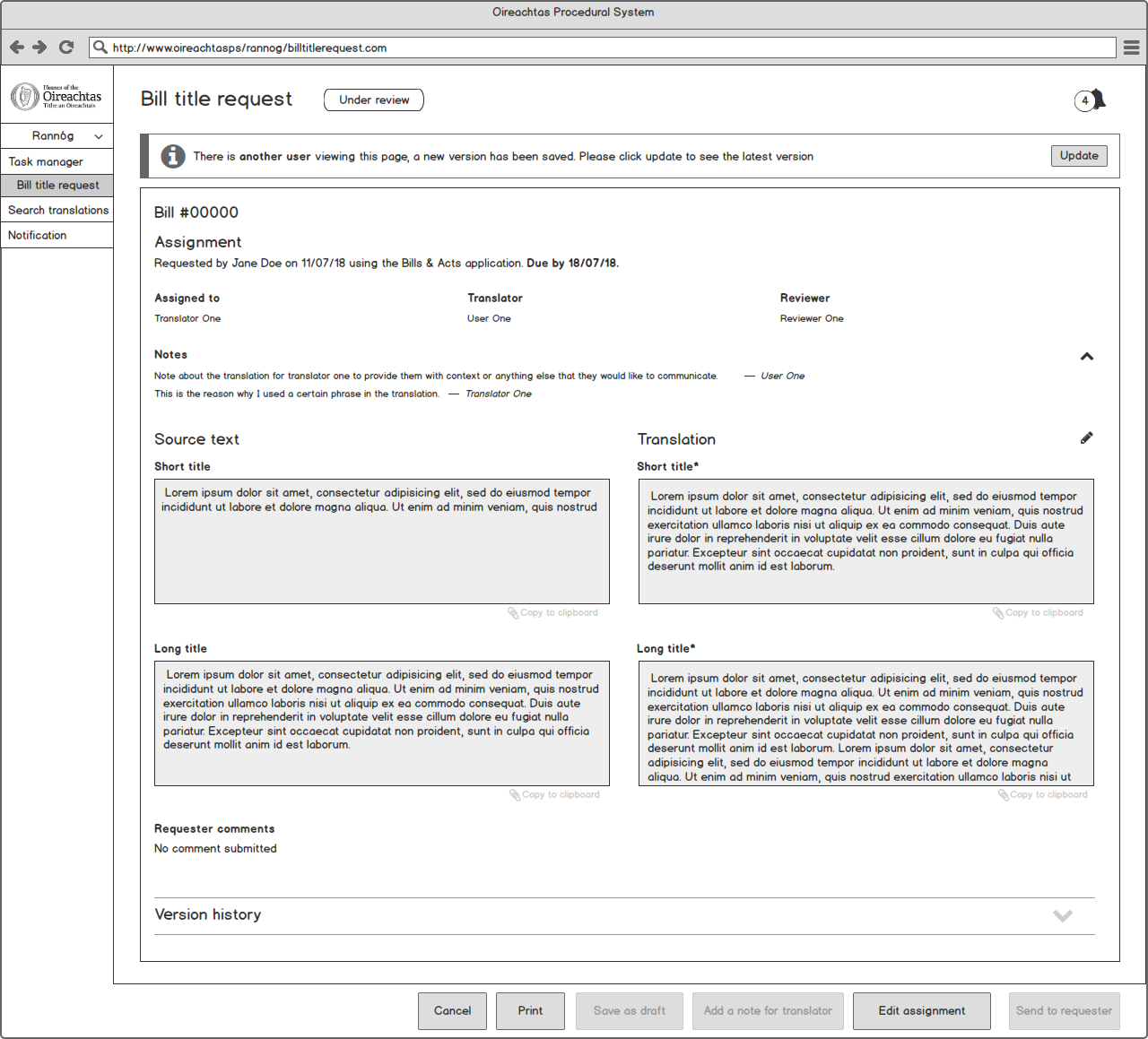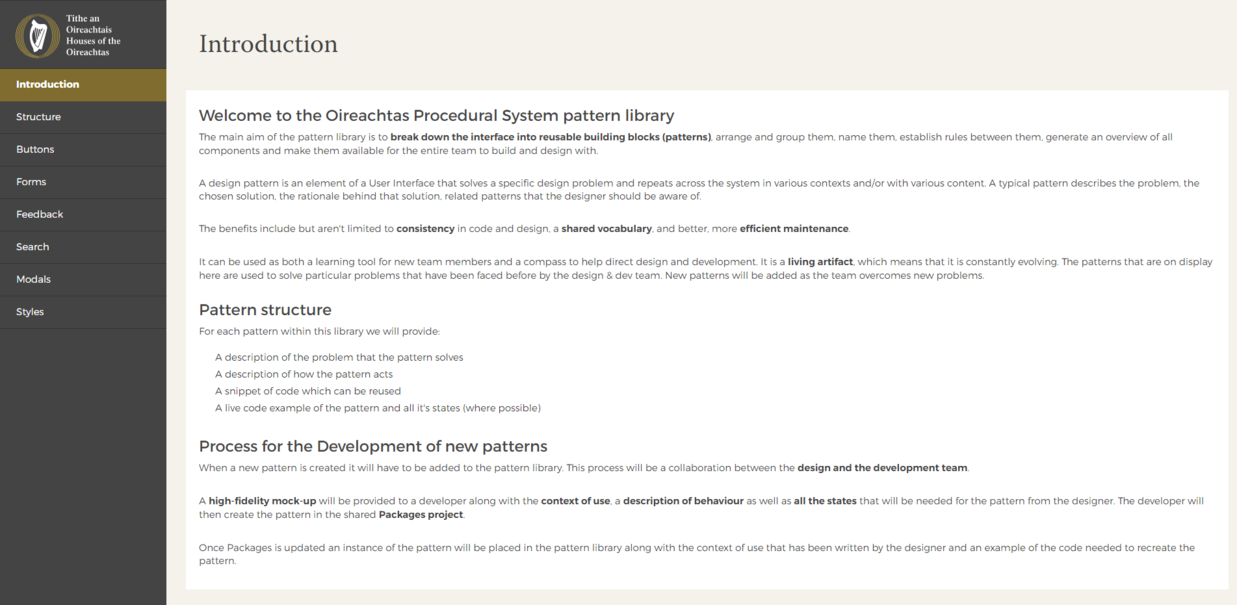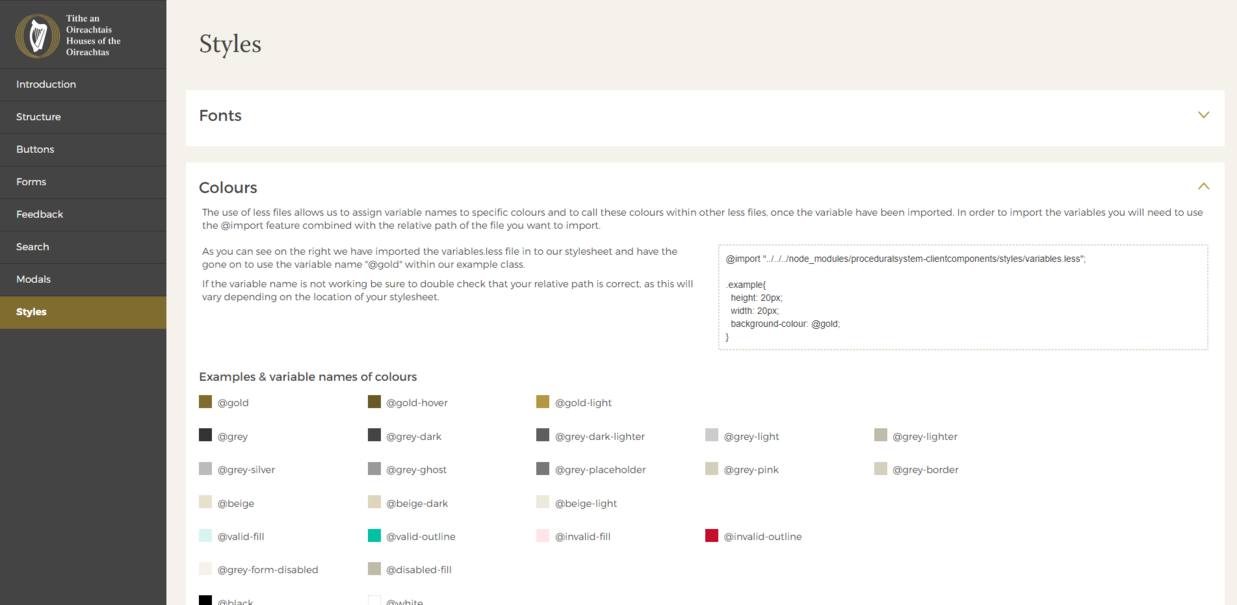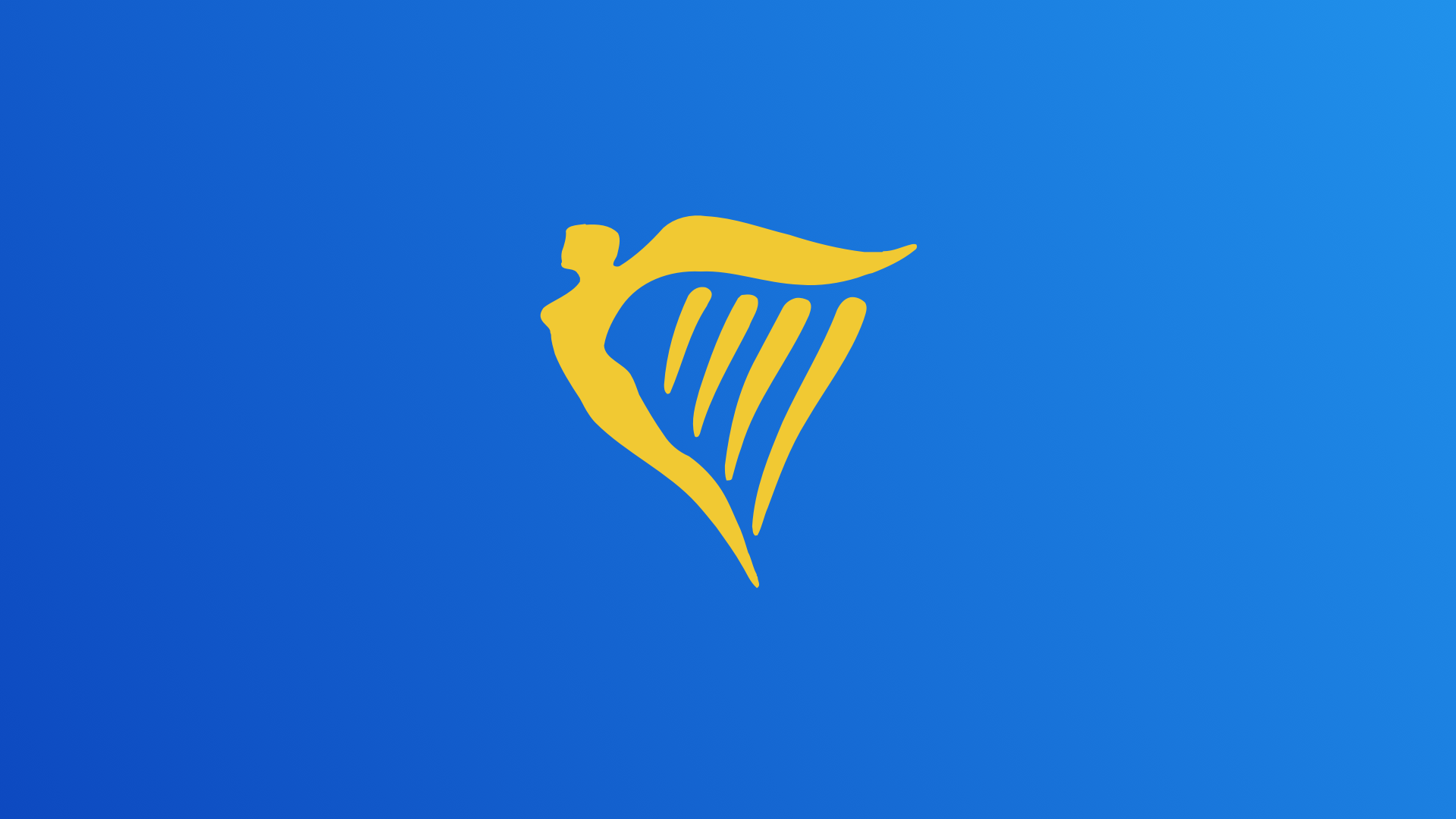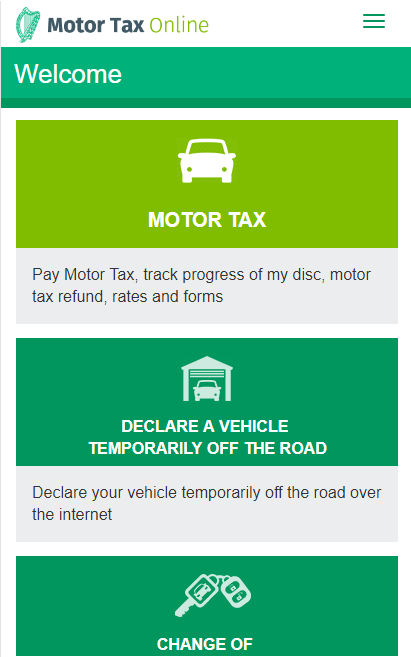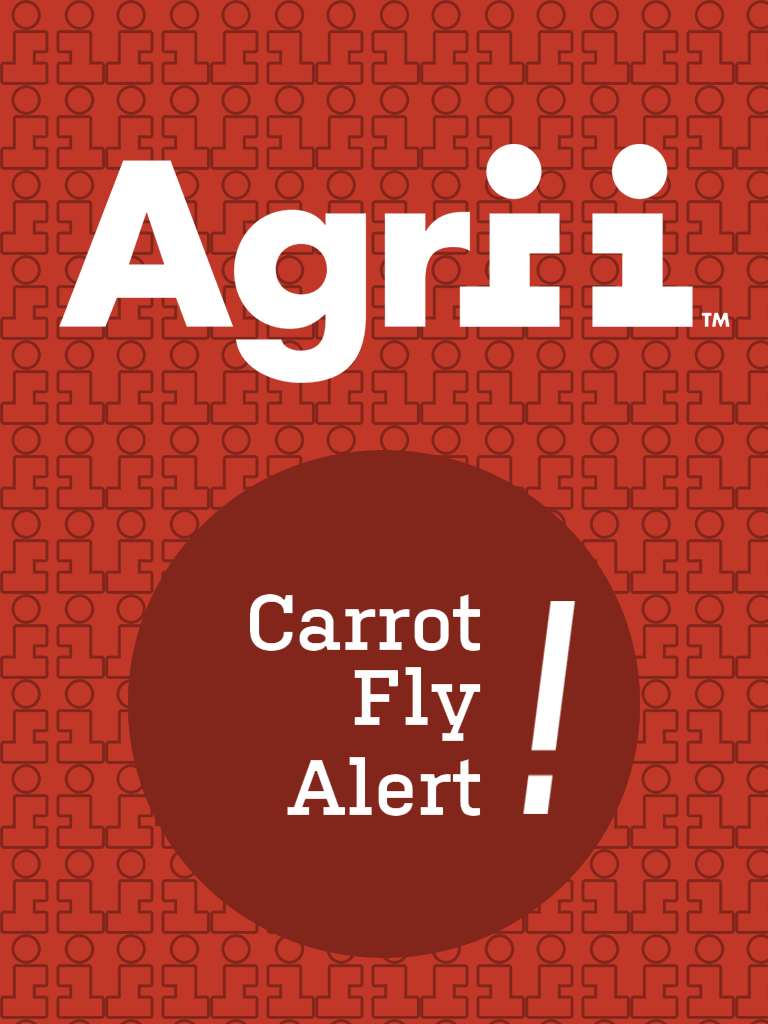
Role: UX Design Lead / BA
The Oireachtas is the name of the Irish Houses of Parliament, Version 1 was tasked with a complete digital transformation of the systems that are used by the Oireachtas to support the houses. The users of the system would vary greatly, from internal clerical staff to TD's (members of parliament).
These systems which currently consist of Lotus Notes databases are being migrated to a cloud-based solution. Being such a large undertaking, the project has been split in to numerous phases with the overarching aim being to "inform the debate" within the Houses of Parliament.
For the first phase I was working as a UI developer who would liaise with another UX agency that was working for the Oireachtas, on the development of a Pattern Library. This initial role saw me receive a link to Sketch files that were being hosted on Zeplin and developing these screens in the Angular application.
While in this role I also started documenting the patterns that were being used within the system and started developing a pattern library. This would leverage the centralised stylesheet and components that were being used to develop the numerous modules of the system. By connecting the pattern library to these centralised styles and components by using NPM packages I was able to create a single version of the truth in relation to the UI.
This pattern library consisted of a basic template for every new pattern or component that was designed. It would have a live example, a description of the use case where it should be used as well as the HTML needed.
After the first phase of the project, a team restructure led to a new role for myself as a combination of UX designer and Business analyst (I also continued to help maintain the pattern library). In this new role I would be gathering user requirements and designing the screens for the development team.
I was tasked with gathering the requirements for a a number of modules including a "Committee Procedural System" application which would generate a single PDF (called a Pack) for TD's attending committee meetings that would contain all the information they would need. We liaised with a development team from Northern Ireland who had previously created such a system and after sitting in on a couple of committee meetings and talking to committee staff about how they prepare for a meeting I presented my findings to the programme manager.
I advised against the approach that was being proposed as I believed the main user was not being catered for. The TD's would have been the main benefactors of the new system and the committee staff would have an increased workload. This phase of the project was then paused as the budget would not be able to cover the new scope. The phase would later get the green light but not until more budget could be secured.
As this phase paused I was moved on to another module to pick up the design of a module where a colleague had left off. I was able to have a handover with my colleague before they left and was quickly brought up to speed. As part of this phase I had to iterate on the existing designs by conducting workshops with subject matter experts from the client. I would then take their feedback in to account while redesigning the screens.
Once this module design was completed and development had began, I again had to reaquaint myself with the previous modules as I was needed to help design the solutions to the change requests made by the users. I also began the requirements gathering for a number of new modules which we are currenlty working on.
